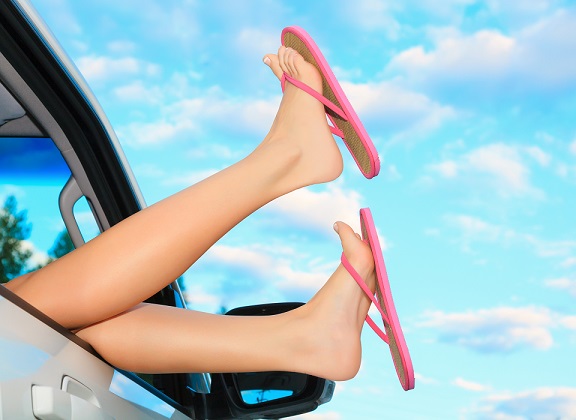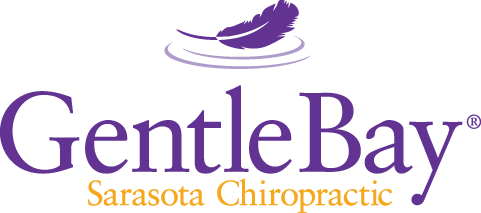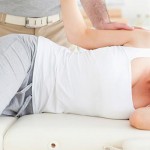by Dr. Eric Winder (as published in the June 2019 issue of Natural Awakenings, Sarasota/Manatee edition)
The weather has grown warmer, and people have ditched their winter shoe wardrobe for flip flops. This probably means that I will be seeing an influx of patients with heel pain over the next several months. The surge in heel pain is often due to plantar fasciitis, a painful condition of the connective tissue in the foot’s arch of the foot, and flip flops make this condition more likely to develop. Fortunately, plantar fasciitis is treatable, and many people can even find relief themselves without seeing a doctor.
To heal plantar fasciitis, it is important to know what causes this issue. The plantar fascia is fibrous connective tissue that acts like a spring to absorb impact shock when you are walking or running. You also absorb this shock in your calf muscles and the bony arch of the foot, but if either of these areas is too stiff, then more force than usual will transfer to the plantar fascia. This can cause pain where the fascia attaches to the heel bone.
 The result is typically a sharp, stabbing pain that is worse when you first stand up to walk after lying down or sitting. The pain can rate from mild to practically crippling, but it often eases up after a few minutes of walking. There are several methods to alleviate plantar fasciitis pain without medical help. Here are some of the more effective options:
The result is typically a sharp, stabbing pain that is worse when you first stand up to walk after lying down or sitting. The pain can rate from mild to practically crippling, but it often eases up after a few minutes of walking. There are several methods to alleviate plantar fasciitis pain without medical help. Here are some of the more effective options:
- Gel heel cushions: These simple, soft inserts can be helpful when plantar fasciitis pain is intensely sharp. They work by minimizing the impact of walking.
- Arch supports or orthotic inserts: An arch support or foot orthotic can eliminate pronation—the inward collapse of the arch and ankle—when walking which prevents rigidity of the foot. This, in turn, diminishes stress on the plantar fascia.
- Calf stretches: Carefully stretching the calf muscles twice daily can allow these muscles a greater ability to absorb shock which takes some of the stress off the plantar fascia when you are walking or running.
- Avoidance of flip flops: Any footwear without a heel strap tends to cause toe clenching which then causes results in stiffening of the foot’s bony arch and the deep calf muscle. This aggravates the plantar fasciitis, and even without toe clenching, flip flops tend to promote pronation which also increases stress on the plantar fascia.
Sometimes people find their plantar fasciitis heel pain is too stubborn to solve with simple home care. This is usually due to a deeper issue such as the build-up of fascia restriction in the deep calf muscle. Calf restriction could be due to fascia stiffness or joint misalignment in the low back, pelvis, hips, knees or ankles.
In our clinic, we successfully treat cases of plantar fasciitis pain by releasing the appropriate fascia restrictions. We do this both with gentle manual therapy and low-level laser therapy. The patient is typically also given a home care program which includes specific stretches and an appropriate solution for foot support like wearing the right type of shoe and using arch supports or orthotics if necessary.
A recent patient, whom I will refer to as George, came into our office for lower back pain treatment but also mentioned chronic plantar fasciitis pain in his right heel. The pain had plagued him for years, and he had tried many treatments, some of which helped, but none had eliminated the pain. While treating George for the fascia restrictions that caused his lower back pain, we also treated the fascia of his calf muscles and other restrictions that caused foot pronation.
He was pleasantly surprised when the heel pain that he endured for years disappeared completely. George’s case demonstrates that successful treatment results from a clear understanding of the cause of the problem. This makes appropriate treatment possible, and in the case of plantar fasciitis, in particular, finding the root of extra stress on the plantar fascia usually solves the problem.



